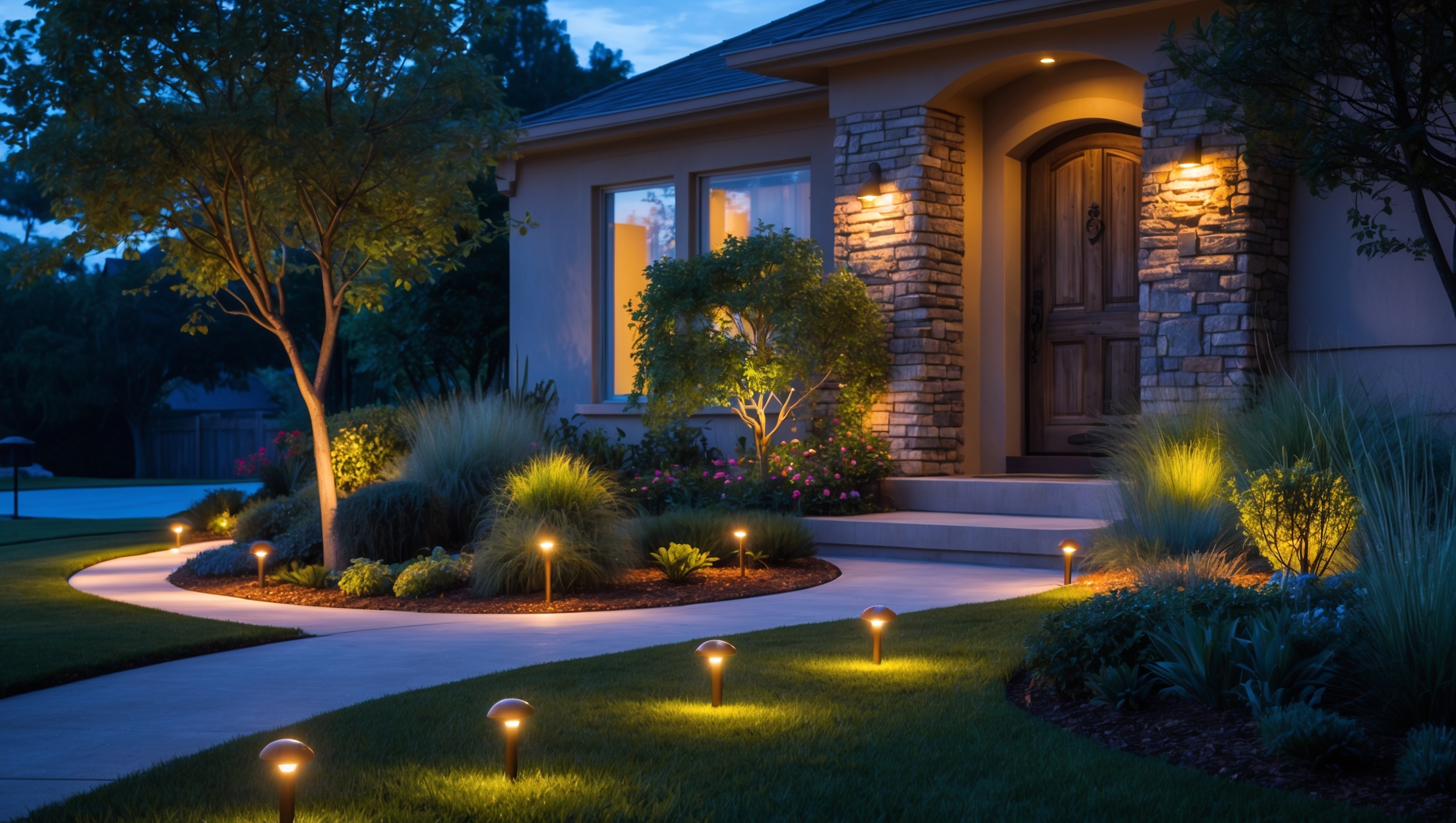Introduction: Why Compliance Matters in Landscape Lighting
Outdoor lighting can transform your home’s exterior, boost curb appeal, and improve security. But before you start illuminating your pathways or highlighting your prized garden, it’s crucial to understand the rules that govern outdoor electrical work. Many homeowners underestimate the importance of compliance when installing landscape lighting. Overlooking permits, local codes, and safety standards can lead to costly fines, forced rework, or even hazardous situations. Whether you’re planning a simple DIY path lighting project or a comprehensive system with transformers and smart controls, knowing the legal and technical requirements is essential. This guide will walk you through the permits you may need, the codes that impact your installation, and the best practices to ensure your landscape lighting is both stunning and safe. We’ll also cover common mistakes, how to work with inspectors, and what to document, so you can enjoy your illuminated yard with confidence.
Understanding Permits for Landscape Lighting
When Is a Permit Required?
Not every landscape lighting project requires a permit, but many do. The necessity depends on your local municipality and the scope of your project. Generally, permits are needed if:
- You’re installing new wiring that connects to your home’s electrical system
- Work involves high-voltage (120V) fixtures rather than plug-in or solar lights
- You’re modifying existing outdoor circuits or adding new ones
- You plan to add a dedicated outdoor electrical panel or subpanel
Check with your city or county building department before starting. Some regions exempt low-voltage (12-24V) lighting from permits, but others may still require inspection.
How to Obtain a Permit
To secure a permit:
- Gather a detailed site plan showing fixture locations, wiring routes, and transformer placement
- Prepare specifications for all lighting components, including voltage, wattage, and fixture ratings
- Submit your application to the local building authority—this may be available online or require an in-person visit
- Pay any required fees (typically $50–$300 depending on scope and location)
- Wait for approval before starting work; processing can take anywhere from a day to several weeks
DIYers should verify if homeowner-performed work is allowed, or if a licensed electrician is needed for the application.
Inspections and Final Approval
Most permitted projects require at least one inspection. Inspectors will check:
- Proper wire burial depth and conduit use
- Correct transformer sizing and installation
- Fixture placement relative to water features or structures
- GFCI protection and safe connections
Pass the inspection to receive final sign-off and avoid future issues when selling your home or renewing insurance.
Key Electrical Codes and Standards
National Electrical Code (NEC) Requirements
The NEC governs outdoor wiring and fixture installation across most of the United States. Key landscape lighting requirements include:
- Wire Burial Depth: Low-voltage wiring must be buried at least 6 inches, while 120V wiring requires 18 inches and must be in conduit
- GFCI Protection: All outdoor electrical outlets and circuits must have ground-fault circuit interrupter (GFCI) protection
- Wet Location Ratings: All fixtures, junction boxes, and connectors must be rated for outdoor/wet location use
- Transformer Placement: Transformers should be installed above ground, away from direct soil contact, and accessible for maintenance
Always use UL-listed (or equivalent) fixtures and components to ensure safety and compliance.
Local Amendments and HOA Rules
Local building codes may be stricter than the national standard. Common local rules include:
- Restrictions on fixture brightness (lumens) to prevent light pollution
- Requirements for timers or motion sensors to reduce energy consumption
- Specific guidelines on fixture placement relative to property lines
- HOA covenants that limit color temperature or fixture style
Always check with your municipality and homeowners association before purchasing or installing equipment.
Best Practices for Safe and Compliant Installation
Design Considerations
Begin with a detailed lighting plan that accounts for:
- Electrical load calculations to avoid overloading circuits
- Strategic placement for both aesthetics and code compliance
- Safe distances from pools, spas, and water features (typically 10 feet minimum for line-voltage)
- Fixture height and orientation to prevent glare and light trespass
Choosing the Right Equipment
- Use only outdoor-rated fixtures, cables, and connectors with IP65 or higher ratings
- Opt for low-voltage systems (12V) where possible—these are safer, easier to install, and often exempt from permits
- Select transformers with built-in circuit protection and timer/photocell options
Proper Wiring Techniques
- Bury all wiring to the required depth and mark the route for future reference
- Use waterproof, gel-filled wire connectors at all splices
- Secure cables to avoid movement and abrasion
- Label circuits and keep a wiring diagram for future troubleshooting or upgrades
GFCI and Surge Protection
- Install GFCI outlets at all power sources
- Add surge protectors at the transformer or main panel to protect against lightning and power surges
Working with Inspectors and Documentation
Preparing for Inspection
Before scheduling an inspection:
- Double-check burial depth and conduit placement
- Ensure all fixtures are mounted securely and at safe distances from hazards
- Test GFCI devices to confirm proper operation
- Have your site plan, permits, and product spec sheets on hand
What Inspectors Look For
Inspectors typically check:
- Adherence to approved plans
- Correct use of weatherproof boxes and connectors
- Transformer and outlet placement
- Safe wire routing and secure fixture installation
Maintaining Records
Keep the following after your project is complete:
- Copies of permits and inspection reports
- Receipts for all purchased materials and equipment
- Wiring diagrams and fixture layout plans
Proper documentation protects you during home sales, insurance claims, or future upgrades.
Common Compliance Mistakes to Avoid
- Installing fixtures or wiring rated only for indoor use
- Skipping permits for high-voltage work
- Insufficient burial depth for cables
- Failure to provide GFCI protection at all outdoor power sources
- Exceeding transformer load ratings, leading to overheating or fire risk
- Ignoring local restrictions on brightness or color temperature
- Improperly sealing wire splices or transformer enclosures
Case Study: A Real-World Landscape Lighting Installation
Project Overview
Homeowner Sarah wanted to install low-voltage path and accent lighting along her front walkway and garden beds. She planned a system with 12 fixtures and a 150W transformer. Her city required a permit for any new outdoor wiring tied to the home’s electrical system.
Steps Taken
- Sarah submitted a site plan and equipment list to the building department
- She hired a licensed electrician to install a weatherproof GFCI outlet and connect the transformer
- All cables were buried at least 6 inches deep and run in flexible conduit where exposed
- Sarah used only UL-listed, IP65-rated fixtures and waterproof connectors
- An inspection was scheduled; the inspector verified burial depth, GFCI function, and fixture placement
- Final approval was issued, and Sarah kept all documents for her records
Lessons Learned
- Permitting added two weeks to the timeline but ensured peace of mind and code compliance
- Working with a professional electrician simplified the process and provided expert oversight
- Proper documentation made future troubleshooting and upgrades easier
Maintenance Tips for Code-Compliant Landscape Lighting
Routine Inspections
- Check fixtures and wiring for damage after storms or landscaping work
- Test GFCI outlets at least every three months
- Verify that transformers are dry, secure, and not overloaded
Seasonal Adjustments
- Trim plants around fixtures to prevent overheating and blocked light
- Adjust timers or photocells as daylight hours change
- Clean lenses and housings for optimal performance
Upgrades and Additions
- Obtain new permits for significant system expansions or upgrades
- Document all changes for future reference and inspections
- Consult local codes before adding smart controllers or high-powered fixtures
Conclusion: Lighting Up Your Landscape the Right Way
Landscape lighting is one of the most rewarding home improvement projects, offering beauty, security, and increased property value. But true peace of mind comes from knowing your installation is safe, legal, and built to last. By understanding permits, adhering to national and local codes, and following installation best practices, you eliminate the risk of costly mistakes or dangerous shortcuts. Take time to plan your project, choose quality equipment, and document every step. Don’t hesitate to consult professionals or your local building department if you have questions—compliance is not just a box to check, but a way to protect your investment and family. With the right approach, you’ll enjoy a beautifully illuminated yard that impresses guests and buyers alike, without the worry of failed inspections or insurance headaches. Illuminate your home responsibly, and let your landscape lighting shine for years to come.



